TrojanSpy:Win32/Nivdort.V is a generic detection used by Microsoft Security Essentials, Windows Defender and other antivirus products for a file that appears to have trojan-like features or behavior.
TrojanSpy:Win32/Nivdort.V contains malicious or potentially unwanted software which downloads and installs on the affected system. Commonly, this infection will install a backdoor which allows remote, surreptitious access to infected systems. This backdoor may then be used by remote attackers to upload and install further malicious or potentially unwanted software on the system.
What is the TrojanSpy:Win32/Nivdort.V infection?
TrojanSpy:Win32/Nivdort.V is a trojan that silently downloads and installs other programs without consent. This could include the installation of additional malware or malware components to an affected computer.
TrojanSpy:Win32/Nivdort.V is a is a broad classification used by Microsoft Security Essentials, Windows Defender and other antivirus engines a file that appears to have trojan-like features or behavior for software that exhibits suspicious behavior categorized as potentially malicious.
TrojanSpy:Win32/Nivdort.V is a trojan that silently downloads and installs other programs without consent. This could include the installation of additional malware or malware components to an affected computer.
The Behavior Monitoring feature observes the behavior of processes as they run programs. If it observes a process behaving in a potentially malicious way, it reports the program the process is running as potentially malicious.
Due to the generic nature of this detection, methods of installation may vary. The TrojanSpy:Win32/Nivdort.V infections may often install themselves by copying their executable to the Windows or Windows system folders, and then modifying the registry to run this file at each system start. TrojanSpy:Win32/Nivdort.Vwill often modify the following subkey in order to accomplish this:
HKEY_LOCAL_MACHINE\Software\Microsoft\Windows\CurrentVersion\Run
TrojanSpy:Win32/Nivdort.V may contact a remote host at opencapture.co.kr using port 80. Commonly, malware may contact a remote host for the following purposes:
- To report a new infection to its author
- To receive configuration or other data
- To download and execute arbitrary files (including updates or additional malware)
- To receive instruction from a remote attacker
- To upload data taken from the affected computer
Is TrojanSpy:Win32/Nivdort.V a False Positive ?
Files reported as TrojanSpy:Win32/Nivdort.V are not necessarily malicious. For example, users can be tricked into using non-malicious programs, such as Web browsers, to unknowingly perform malicious actions, such as downloading malware. Some otherwise harmless programs may have flaws that malware or attackers can exploit to perform malicious actions. Should you be uncertain as to whether a file has been reported correctly, we encourage you to submit the affected file to https://www.virustotal.com/en/ to be scanned with multiple antivirus engines.
How did TrojanSpy:Win32/Nivdort.V infection got on my computer?
The TrojanSpy:Win32/Nivdort.V virus is distributed through several means. Malicious websites, or legitimate websites that have been hacked, can infect your machine through exploit kits that use vulnerabilities on your computer to install this Trojan without your permission of knowledge.
Another method used to propagate this type of malware is spam email containing infected attachments or links to malicious websites. Cyber-criminals spam out an email, with forged header information, tricking you into believing that it is from a shipping company like DHL or FedEx. The email tells you that they tried to deliver a package to you, but failed for some reason. Sometimes the emails claim to be notifications of a shipment you have made. Either way, you can’t resist being curious as to what the email is referring to – and open the attached file (or click on a link embedded inside the email). And with that, your computer is infected with the TrojanSpy:Win32/Nivdort.V virus.
The threat may also be downloaded manually by tricking the user into thinking they are installing a useful piece of software, for instance a bogus update for Adobe Flash Player or another piece of software.
How to remove TrojanSpy:Win32/Nivdort.V virus (Removal Guide)
This page is a comprehensive guide, which will remove the TrojanSpy:Win32/Nivdort.V infection from your computer. Please perform all the steps in the correct order. If you have any questions or doubt at any point, STOP and ask for our assistance.
STEP 1: Remove TrojanSpy:Win32/Nivdort.V Master Boot Record infection with Kaspersky TDSSKiller
STEP 2: Run RKill to terminate TrojanSpy:Win32/Nivdort.V malicious processes
STEP 3: Remove TrojanSpy:Win32/Nivdort.V virus with Malwarebytes Anti-Malware Free
STEP 4: Remove TrojanSpy:Win32/Nivdort.V infection with HitmanPro
STEP 5: Double check for any left over infections with Emsisoft Emergency Kit
STEP 6: Remove TrojanSpy:Win32/Nivdort.V adware with AdwCleaner
STEP 7: Remove TrojanSpy:Win32/Nivdort.V browser hijacker with Junkware Removal Tool
STEP 1: Remove TrojanSpy:Win32/Nivdort.V trojan with Kaspersky TDSSKiller
As part of its self-defense mechanism, TrojanSpy:Win32/Nivdort.V virus will install a ZeroAccess rootkit on the infected computer.In this first step, we will run a system scan with Kaspersky TDSSKiller to remove this rookit.
- Please download the latest official version of Kaspersky TDSSKiller.
KASPERSKY TDSSKILLER DOWNLOAD LINK(This link will automatically download Kaspersky TDSSKiller on your computer.) - Double-click on tdsskiller.exe to open this utility, then click on Change Parameters.
- In the new open window,we will need to enable Detect TDLFS file system, then click on OK.
- Next,we will need to start a scan with Kaspersky, so you’ll need to press the Start Scan button.
- Kaspersky TDSSKiller will now scan your computer for Trojan TrojanSpy:Win32/Nivdort.V infection.
- When the scan has finished it will display a result screen stating whether or not the infection was found on your computer. If it was found it will display a screen similar to the one below.
- To remove the infection simply click on the Continue button and TDSSKiller will attempt to clean the infection.A reboot will be require to completely remove any infection from your system.
STEP 2: Run RKill to terminate TrojanSpy:Win32/Nivdort.V malicious processes
RKill is a program that will attempt to terminate all malicious processes associated with TrojanSpy:Win32/Nivdort.V infection, so that we will be able to perform the next step without being interrupted by this malicious software.
Because this utility will only stop TrojanSpy:Win32/Nivdort.V running process, and does not delete any files, after running it you should not reboot your computer as any malware processes that are configured to start automatically will just be started again.
- While your computer is in Safe Mode with Networking ,please download the latest official version of RKill.Please note that we will use a renamed version of RKILL so that Proven Antivirus Protection won’t block this utility from running.
RKILL DOWNLOAD LINK (This link will automatically download RKILL renamed as iExplore.exe) - Double click on iExplore.exe to start RKill and stop any processes associated with TrojanSpy:Win32/Nivdort.V.
- RKill will now start working in the background, please be patient while the program looks for TrojanSpy:Win32/Nivdort.V malicious process and tries to end them.
- When the Rkill utility has completed its task, it will generate a log. Do not reboot your computer after running RKill as the malware programs will start again.
STEP 3: Remove TrojanSpy:Win32/Nivdort.V virus with Malwarebytes Anti-Malware FREE
Malwarebytes Anti-Malware Free uses industry-leading technology to detect and remove all traces of malware, including worms, Trojans, rootkits, rogues, dialers, spyware, and more.
It is important to note that Malwarebytes Anti-Malware works well and should run alongside antivirus software without conflicts.
- You can download download Malwarebytes Anti-Malware from the below link.
MALWAREBYTES ANTI-MALWARE DOWNLOAD LINK (This link will open a new web page from where you can download Malwarebytes Anti-Malware Free) - Once downloaded, close all programs, then double-click on the icon on your desktop named “mbam-setup-consumer-2.00.xx” to start the installation of Malwarebytes Anti-Malware.
You may be presented with a User Account Control dialog asking you if you want to run this file. If this happens, you should click “Yes” to continue with the installation.
- When the installation begins, you will see the Malwarebytes Anti-Malware Setup Wizard which will guide you through the installation process.
To install Malwarebytes Anti-Malware on your machine, keep following the prompts by clicking the “Next” button.
- Once installed, Malwarebytes Anti-Malware will automatically start and you will see a message stating that you should update the program, and that a scan has never been run on your system. To start a system scan you can click on the “Fix Now” button.
Alternatively, you can click on the “Scan” tab and select “Threat Scan“, then click on the “Scan Now” button.
- Malwarebytes Anti-Malware will now check for updates, and if there are any, you will need to click on the “Update Now” button.
- Malwarebytes Anti-Malware will now start scanning your computer for the TrojanSpy:Win32/Nivdort.V virus. When Malwarebytes Anti-Malware is scanning it will look like the image below.
- When the scan has completed, you will now be presented with a screen showing you the malware infections that Malwarebytes’ Anti-Malware has detected. To remove the malicious programs that Malwarebytes Anti-malware has found, click on the “Quarantine All” button, and then click on the “Apply Now” button.
Please note that the infections found may be different than what is shown in the image. - Malwarebytes Anti-Malware will now quarantine all the malicious files and registry keys that it has found. When removing the files, Malwarebytes Anti-Malware may require a reboot in order to remove some of them. If it displays a message stating that it needs to reboot your computer, please allow it to do so.
After your computer will restart, you should open Malwarebytes Anti-Malware and perform another “Threat Scan” scan to verify that there are no remaining threats
STEP 4: Remove TrojanSpy:Win32/Nivdort.V infection with HitmanPro
HitmanPro is a second opinion scanner, designed to rescue your computer from malware (viruses, trojans, rootkits, etc.) that have infected your computer despite all the security measures you have taken (such as anti-virus software, firewalls, etc.). HitmanPro is designed to work alongside existing security programs without any conflicts. It scans the computer quickly (less than 5 minutes) and does not slow down the computer.
- You can download HitmanPro from the below link:
HITMANPRO DOWNLOAD LINK (This link will open a new web page from where you can download HitmanPro) - Double-click on the file named “HitmanPro.exe” (for 32-bit versions of Windows) or “HitmanPro_x64.exe” (for 64-bit versions of Windows). When the program starts you will be presented with the start screen as shown below.
Click on the “Next” button, to install HitmanPro on your computer.
- HitmanPro will now begin to scan your computer for TrojanSpy:Win32/Nivdort.V malicious files.
- When it has finished it will display a list of all the malware that the program found as shown in the image below. Click on the “Next” button, to remove TrojanSpy:Win32/Nivdort.V virus.
- Click on the “Activate free license” button to begin the free 30 days trial, and remove all the malicious files from your computer.
STEP 5: Double check for any left over infections with Emsisoft Emergency Kit
The Emsisoft Emergency Kit Scanner includes the powerful Emsisoft Scanner complete with graphical user interface. Scan the infected PC for Viruses, Trojans, Spyware, Adware, Worms, Dialers, Keyloggers and other malicious programs.
- You can download Emsisoft Emergency Kit from the below link,then extract it to a folder in a convenient location.
EMSISOFT EMERGENCY KIT DOWNLOAD LINK ((This link will open a new web page from where you can download Emsisoft Emergency Kit) - Open the Emsisoft Emergency Kit folder and double-click EmergencyKitScanner.bat, then allow this program to update itself.
- After the Emsisoft Emergency Kit has update has completed,click on the Menu tab,then select Scan PC.
- Select Smart scan and click on the SCAN button to search for “Antivirus Security 2013” malicious files.
- When the scan will be completed,you will be presented with a screen reporting which malicious files has Emsisoft detected on your computer, and you’ll need to click on Quarantine selected objects to remove them.
STEP 6: Remove TrojanSpy:Win32/Nivdort.V adware with AdwCleaner
The AdwCleaner utility will scan your computer for TrojanSpy:Win32/Nivdort.V malicious files and registry keys, that may have been installed on your computer without your knowledge.
- You can download AdwCleaner utility from the below link.
ADWCLEANER DOWNLOAD LINK (This link will automatically download AdwCleaner on your computer) - Before starting AdwCleaner, close all open programs and internet browsers, then double-click on the AdwCleaner icon.
If Windows prompts you as to whether or not you wish to run AdwCleaner, please allow it to run. - When the AdwCleaner program will open, click on the “Scan” button as shown below.
AdwCleaner will now start to search for the “TrojanSpy:Win32/Nivdort.V” malicious files that may be installed on your computer. - To remove the “TrojanSpy:Win32/Nivdort.V” malicious files that were detected in the previous step, please click on the “Clean” button.
- AdwCleaner will now prompt you to save any open files or documents, as the program will need to reboot the computer. Please do so and then click on the OK button.
STEP 7: Remove TrojanSpy:Win32/Nivdort.V browser hijack with Junkware Removal Tool
Junkware Removal Tool is a powerful utility, which will remove TrojanSpy:Win32/Nivdort.V virus from Internet Explorer, Firefox or Google Chrome.
- You can download the Junkware Removal Tool utility from the below link:
JUNKWARE REMOVAL TOOL DOWNLOAD LINK (This link will automatically download the Junkware Removal Tool utility on your computer) - Once Junkware Removal Tool has finished downloading, please double-click on the JRT.exe icon as seen below.
If Windows prompts you as to whether or not you wish to run Junkware Removal Tool, please allow it to run. - Junkware Removal Tool will now start, and at the Command Prompt, you’ll need to press any key to perform a scan for the TrojanSpy:Win32/Nivdort.V.
Please be patient as this can take a while to complete (up to 10 minutes) depending on your system’s specifications. - When the scan Junkware Removal Tool will be completed, this utility will display a log with the malicious files and registry keys that were removed from your computer.
Your computer should now be free of the TrojanSpy:Win32/Nivdort.V infection. If your current anti-virus solution let this infection through, you may want to consider purchasing the Premium version of Malwarebytes Anti-Malware to protect against these types of threats in the future, and perform regular computer scans with HitmanPro.
If you are still experiencing problems while trying to remove Adware Generic_r.KG from your machine, please start a new thread in our Malware Removal Assistance forum.

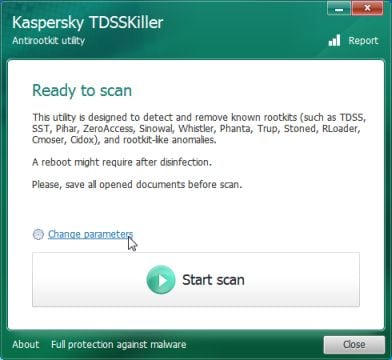
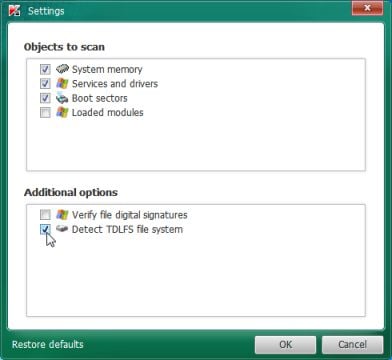
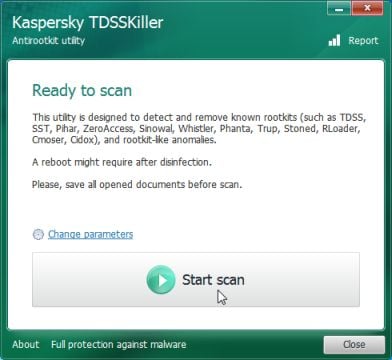
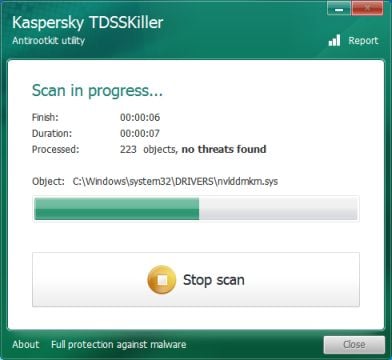
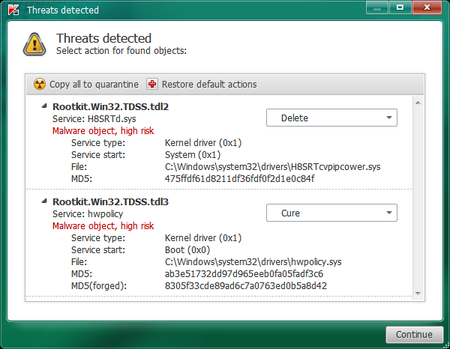
![Rkill renamed to iExplore.exe [Image: RKILL Program]](http://malwaretips.com/blogs/wp-content/uploads/2013/01/rkill-run-as-admin.jpg)
![RKill while killing TrojanSpy:Win32/Nivdort.V malicious process [Image: RKILL stoping malware]](http://malwaretips.com/blogs/wp-content/uploads/2013/01/rkill-program.jpg)
![RKill Log [Image: RKill Report]](http://malwaretips.com/blogs/wp-content/uploads/2013/01/rkill-report.jpg)
![Malwarebytes Anti-Malware setup program [Image: Malwarebytes Anti-Malware setup program]](http://malwaretips.com/blogs/wp-content/uploads/2014/02/Malwarebytes-Anti-Malware-Setup.jpg)
![Malwarebytes Anti-Malware Setup Wizard [Image: Malwarebytes Anti-Malware Setup Wizard]](http://malwaretips.com/blogs/wp-content/uploads/2014/02/malwarebytes-anti-malware-2-0-installation.jpg)
![Malwarebytes Anti-Malware Final Setup Screen [Image: Malwarebytes Anti-Malware Final Setup Screen]](http://malwaretips.com/blogs/wp-content/uploads/2014/02/malwarebytes-anti-malware-2-0-final-screen.jpg)
![Remove TrojanSpy:Win32/Nivdort.V (Removal Guide) 1 [Image: Click on the Fix Now button to start a scan]](http://malwaretips.com/blogs/wp-content/uploads/2014/02/malwarebytes-anti-malware-fix-now.jpg)
![Malwarebytes Anti-Malware Threat Scan [Image: Malwarebytes Anti-Malware Threat Scan]](http://malwaretips.com/blogs/wp-content/uploads/2014/02/malwarebytes-anti-malware-threat-scan-option.jpg)
![Click on Update Now to update Malwarebytes Anti-Malware [Image: Click on Update Now to update Malwarebytes Anti-Malware]](http://malwaretips.com/blogs/wp-content/uploads/2014/02/malwarebytes-anti-malware-2-0-update-now.jpg)
![Malwarebytes Anti-Malware while performing a scan [Image: Malwarebytes Anti-Malware while performing a scan]](http://malwaretips.com/blogs/wp-content/uploads/2014/02/malwarebytes-anti-malware-scan.jpg)
![Remove the malware that Malwarebytes Anti-Malware has detected [Image: Remove the malware that Malwarebytes Anti-Malware has found]](http://malwaretips.com/blogs/wp-content/uploads/2014/02/malwarebytes-anti-malware-potential-threat-detected.jpg)
![Malwarebytes Anti-Malware asking to reboot your computer [Image: Malwarebytes Anti-Malware while removing viruses]](http://malwaretips.com/blogs/wp-content/uploads/2014/02/malwarebytes-anti-malware-remove-virus.jpg)
![HitmanPro startup screen (Click Next) [Image: HitmanPro start-up screen]](http://malwaretips.com/blogs/wp-content/uploads/2014/03/hitmanpro-install.jpg)
![HitmanPro installation options (Click Next) [Image: HitmanPro setup options]](http://malwaretips.com/blogs/wp-content/uploads/2014/03/hitmapro-start-scan.jpg)
![HitmanPro scanning for TrojanSpy:Win32/Nivdort.V [Image: HitmanPro scanning for malware]](http://malwaretips.com/blogs/wp-content/uploads/2014/03/hitmanpro-scanning.jpg)
![HitmanPro scan results (Click Next) [Image: HitmanPro scan results]](http://malwaretips.com/blogs/wp-content/uploads/2014/03/hitmanpro-scan-results.jpg)
![Click on the Activate free license button [Image: HitmanPro Activate Free License]](http://malwaretips.com/blogs/wp-content/uploads/2014/03/hitmanpro-activation.jpg)
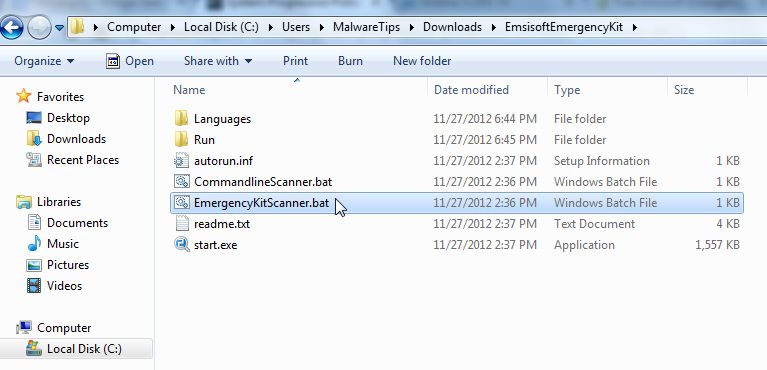
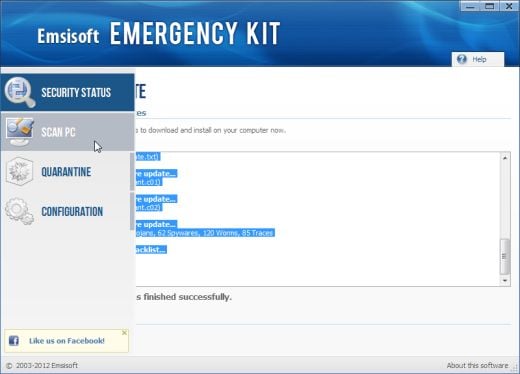
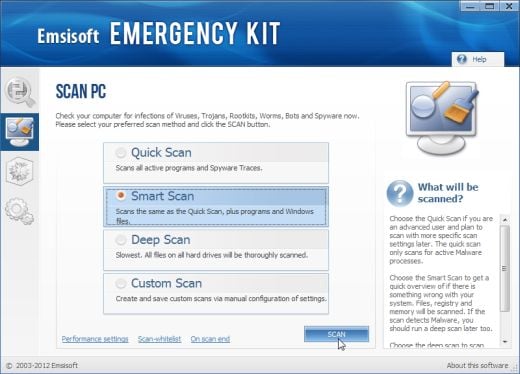
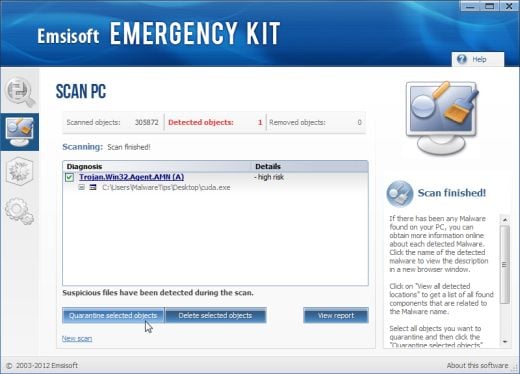
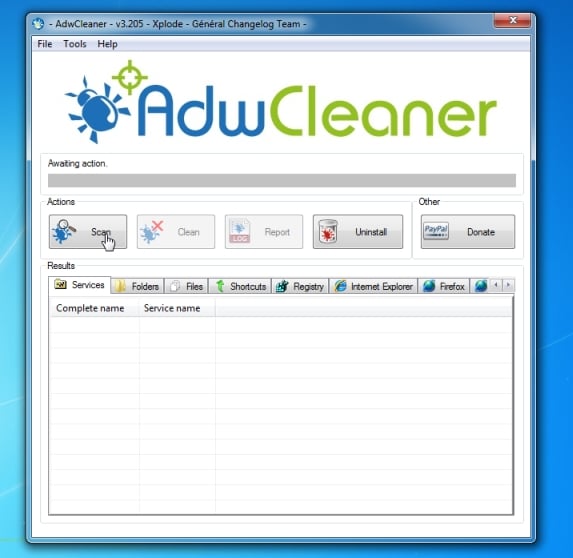
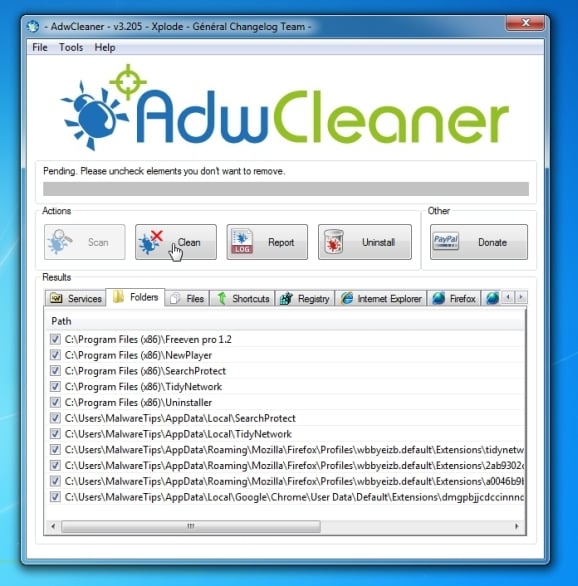

![Junkware Removal Tool scanning for TrojanSpy:Win32/Nivdort.V virus [Image: Junkware Removal Tool scanning for TrojanSpy:Win32/Nivdort.V virus]](http://malwaretips.com/blogs/wp-content/uploads/2013/06/junkware-removal-tool.jpg)
![Junkware Removal Tool final log [Image: Junkware Removal Tool final log]](http://malwaretips.com/blogs/wp-content/uploads/2013/06/Junkware-log.jpg)









